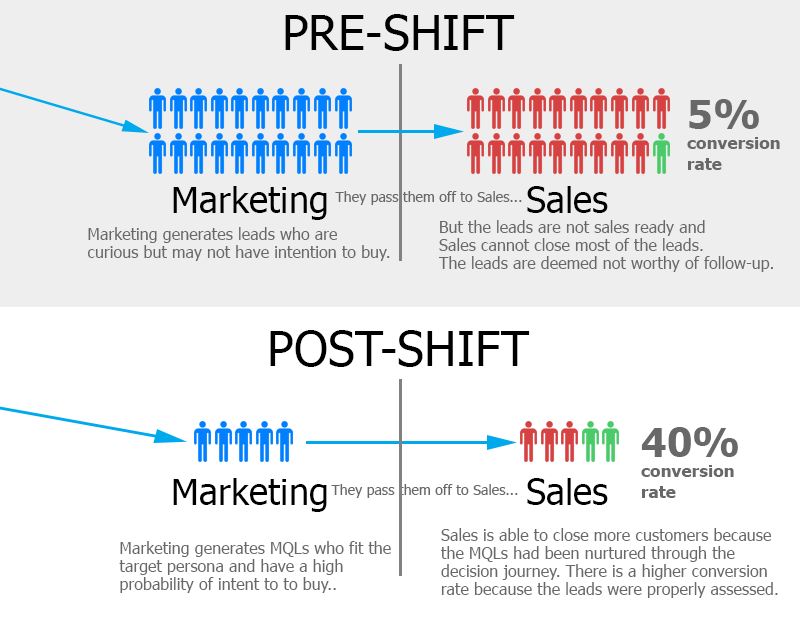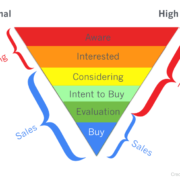Why You Need Fewer Leads…But More Marketing Qualified Leads
Why Marketing Qualified Leads?
Although many marketers focus on increasing the number of leads, quite often marketers should be in fact aiming to have fewer leads. The key is that this smaller number of leads are Marketing Qualified Leads (MQLs), who are genuine sales prospects, instead of people who are curious but have no intent to buy.
With the abundance of available marketing channels, marketers have an enormous range of tools at their disposal to generate leads. The continued advancement of technology and online capabilities have contributed greatly to this development of marketing channels and is likely to do so for the foreseeable future. Modern marketers utilize digital marketing to reach prospective customers through content marketing, email, social media, search engine optimization, and mobile ads, to name a few.
So what’s the issue?
At first glance, this doesn’t seem to be a problem – isn’t it the job of marketers to reach more people and generate more leads? However, the real issue is in managing the relationship between Marketing and Sales against the changing landscape of how marketers interact with their customers throughout the buyer’s journey.
Before, Marketing would hand off their leads to sales right after making contact; this would be a “lead”. Nowadays, its role in the customer experience journey has shifted. Marketing has an active role almost entirely throughout awareness, consideration, and evaluation, while Sales plays the critical role of closing the deal and communicating to the prospective client “Why me?” in a world where there’s a plethora of competitors who are also inundating them with marketing and advertising, especially online.
With Marketing and Sales collaborating throughout the customer journey, it is imperative that they establish a shared understanding of each stage of the buy-sell process.

When Marketing and Sales Goes Wrong
Too often companies fail to adapt to this new customer experience journey. For instance, what happens when there is an influx of leads who have been procured through Marketing, but these leads have not actually been nurtured through the ‘consideration’ stage of their customer journey? These “leads” may just be kicking the tires or researching information and when handed off to Sales, they can waste a lot of valuable time and result in a low conversion rates.
This, in turn, adds frustration between the sales and marketing teams. Sales and Marketing lose trust in each other. Marketing believes that the leads should have been converted into customers, while Sales thinks that the leads are not worthy of follow-up.
To fix this, we need to restructure the traditional customer funnel to account for Marketing and Sales’ changed roles.
Instead of Marketing looking to generate as many ‘leads’ as possible, they need to focus on generating the right number of MQLs and SALs (Sales Accepted Leads). These leads have criteria that are agreed across marketing and sales and they have the potential to convert to customers. An MQL has expressed intent to buy. MQLs fit the company’s target persona and indicate a potential purchase decision. A common understanding that what constitutes a Marketing Qualified Lead is critical. This approach leads to more productive sales reps with higher conversion percentages and greater velocity through the funnel.
Let’s have a look at a simplified example.

Great! What next?
This raises yet another issue of how MQLs, and thus SQLs, should be identified.
Marketing and Sales need to agree the right lead-scoring and grading criteria to properly assess whether a ‘lead’ is simply an interested party or is a sales-ready MQL.
To track integrate the process across marketing and sales, leaders are engaging a closed loop marketing architecture. With analysis of sales data, marketing can generate the insights necessary for identifying and nurturing MQLs and ‘closed the loop’ with sales. MQLs are much more important than traditional ‘leads’. Having a few MQLs who actually have a high likelihood of converting is far more valuable to sales teams then many leads with low conversion rates.
To find out more about how a closed-loop marketing architecture can be used to optimize your sales and marketing and MQL-generation processes, check out our blog posts on the topic or download a free copy of a closed loop marketing architecture reference blueprint.







Leave a Reply
Want to join the discussion?Feel free to contribute!